Рейтинг книг Donald Wigal
Начиная изучать творчество писателя - уделите внимание произведениям, которые находятся на вершине этого рейтинга. Смело нажимайте на стрелочки - вверх и вниз, если считаете, что какое-то произведение должно находиться выше или ниже в списке. В результате общих усилий, в том числе, на основании ваших оценок мы и получим самый адекватный рейтинг книг Donald Wigal.
-
1.
 Sargent was born in Florence, in 1856, the son of cultivated parents. When Sargent entered the school of Carolus-Duran he attained much more than the average pupils. His father was a retired Massachusetts gentleman, having practised medicine in Philadelphia. Sargent’s home life was penetrated with refinement, and outside it were the beautiful influences of Florence, combining the charms of sky and hills with the wonders of art in the galleries and the opportunities of an intellectual and artistic society. Accordingly, when Sargent arrived in Paris, he was not only a skilful draughtsman and painter as a result of his study of the Italian masters, but he also had a refined and cultivated taste, which perhaps had an even greater influence upon his career. Later in Spain, it was chiefly upon the lessons learned from Velázquez that he found his own brilliant method. Sargent belongs to America, but is claimed by others as a citizen of the world, or a cosmopolitan. Sargent, with the exception of a few months at distant intervals, spent his life abroad. The artistic influences which affected him were those of Europe. Yet his Americanism may be detected in his extraordinary facility to absorb impressions, in the individuality he evolved, and in the subtlety and reserve of his methods – qualities that are characteristic of the best American art. ... Далее
Sargent was born in Florence, in 1856, the son of cultivated parents. When Sargent entered the school of Carolus-Duran he attained much more than the average pupils. His father was a retired Massachusetts gentleman, having practised medicine in Philadelphia. Sargent’s home life was penetrated with refinement, and outside it were the beautiful influences of Florence, combining the charms of sky and hills with the wonders of art in the galleries and the opportunities of an intellectual and artistic society. Accordingly, when Sargent arrived in Paris, he was not only a skilful draughtsman and painter as a result of his study of the Italian masters, but he also had a refined and cultivated taste, which perhaps had an even greater influence upon his career. Later in Spain, it was chiefly upon the lessons learned from Velázquez that he found his own brilliant method. Sargent belongs to America, but is claimed by others as a citizen of the world, or a cosmopolitan. Sargent, with the exception of a few months at distant intervals, spent his life abroad. The artistic influences which affected him were those of Europe. Yet his Americanism may be detected in his extraordinary facility to absorb impressions, in the individuality he evolved, and in the subtlety and reserve of his methods – qualities that are characteristic of the best American art. ... Далее -
2.
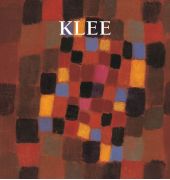 Paul Klee gehört zu den Künstlern, die sich nur schwerlich einer bestimmten kunstgeschichtlichen Bewegung zuordnen lassen. In engem Kontakt mit Wassily Kandinsky und Franz Marc gehörte er wie diese der expressionistischen Künstlergruppe Der Blaue Reiter an. Später knüpfte er Verbindungen zum Bauhaus und unterrichtete sogar Malerei an der Dessauer Schule. Seiner Ansicht nach ging es bei der Kunst keineswegs um die Produktion, sondern vielmehr darum, die Dinge äußerst sichtbar werden zu lassen. In seinen Gemälden vereinte Klee geschickt die zu Beginn des 20. Jahrhunderts vorherrschenden Tendenzen. Er führte kubistische und orphistische Elemente in den deutschen Expressionismus ein und verlieh seinen eigenen Werken eine surrealistische und melancholische Poesie. Der Autor führt uns hier die Wunder der Klee’schen Welt vor Augen, in der jeder Pinselstrich die Macht der Farben bestätigt. ... Далее
Paul Klee gehört zu den Künstlern, die sich nur schwerlich einer bestimmten kunstgeschichtlichen Bewegung zuordnen lassen. In engem Kontakt mit Wassily Kandinsky und Franz Marc gehörte er wie diese der expressionistischen Künstlergruppe Der Blaue Reiter an. Später knüpfte er Verbindungen zum Bauhaus und unterrichtete sogar Malerei an der Dessauer Schule. Seiner Ansicht nach ging es bei der Kunst keineswegs um die Produktion, sondern vielmehr darum, die Dinge äußerst sichtbar werden zu lassen. In seinen Gemälden vereinte Klee geschickt die zu Beginn des 20. Jahrhunderts vorherrschenden Tendenzen. Er führte kubistische und orphistische Elemente in den deutschen Expressionismus ein und verlieh seinen eigenen Werken eine surrealistische und melancholische Poesie. Der Autor führt uns hier die Wunder der Klee’schen Welt vor Augen, in der jeder Pinselstrich die Macht der Farben bestätigt. ... Далее -
3.
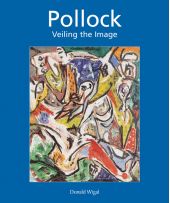 Born in 1912, in a small town in Wyoming, Jackson Pollock embodied the American dream as the country found itself confronted with the realities of a modern era replacing the fading nineteenth century. Pollock left home in search of fame and fortune in New York City. Thanks to the Federal Art Project he quickly won acclaim, and after the Second World War became the biggest art celebrity in America. For De Kooning, Pollock was the “icebreaker”. For Max Ernst and Masson, Pollock was a fellow member of the European Surrealist movement. And for Motherwell, Pollock was a legitimate candidate for the status of the Master of the American School. During the many upheavals in his life in Nez York in the 1950s and 60s, Pollock lost his bearings – success had simply come too fast and too easily. It was during this period that he turned to alcohol and disintegrated his marriage to Lee Krasner. His life ended like that of 50s film icon James Dean behind the wheel of his Oldsmobile, after a night of drinking. ... Далее
Born in 1912, in a small town in Wyoming, Jackson Pollock embodied the American dream as the country found itself confronted with the realities of a modern era replacing the fading nineteenth century. Pollock left home in search of fame and fortune in New York City. Thanks to the Federal Art Project he quickly won acclaim, and after the Second World War became the biggest art celebrity in America. For De Kooning, Pollock was the “icebreaker”. For Max Ernst and Masson, Pollock was a fellow member of the European Surrealist movement. And for Motherwell, Pollock was a legitimate candidate for the status of the Master of the American School. During the many upheavals in his life in Nez York in the 1950s and 60s, Pollock lost his bearings – success had simply come too fast and too easily. It was during this period that he turned to alcohol and disintegrated his marriage to Lee Krasner. His life ended like that of 50s film icon James Dean behind the wheel of his Oldsmobile, after a night of drinking. ... Далее -
4.
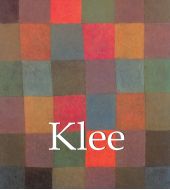 An emblematic figure of the early 20th century, Paul Klee participated in the expansive Avant-Garde movements in Germany and Switzerland. From the vibrant Blaue Reiter movement to Surrealism at the end of the 1930s and throughout his teaching years at the Bauhaus, he attempted to capture the organic and harmonic nature of painting by alluding to other artistic mediums such as poetry, literature, and, above all, music. While he collaborated with artists like August Macke and Alexej von Jawlensky, his most famous partnership was with the abstract expressionist, Wassily Kandinsky. ... Далее
An emblematic figure of the early 20th century, Paul Klee participated in the expansive Avant-Garde movements in Germany and Switzerland. From the vibrant Blaue Reiter movement to Surrealism at the end of the 1930s and throughout his teaching years at the Bauhaus, he attempted to capture the organic and harmonic nature of painting by alluding to other artistic mediums such as poetry, literature, and, above all, music. While he collaborated with artists like August Macke and Alexej von Jawlensky, his most famous partnership was with the abstract expressionist, Wassily Kandinsky. ... Далее -
5.
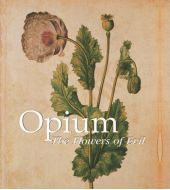 Opium, once used for ritual purposes, is a substance which dulls pain and offers access to an artificial world, and has long been idealized by artists and markets. Baudelaire, Picasso, and Dickens were all inspired to create by the blue clouds of smoke. Known as either a sacred drug or the worst of poisons, opium rapidly became popular in Great Britain and a source of commerce with Imperial China. This illustrated work presents the history and quasi-religious rites of opium’s use. ... Далее
Opium, once used for ritual purposes, is a substance which dulls pain and offers access to an artificial world, and has long been idealized by artists and markets. Baudelaire, Picasso, and Dickens were all inspired to create by the blue clouds of smoke. Known as either a sacred drug or the worst of poisons, opium rapidly became popular in Great Britain and a source of commerce with Imperial China. This illustrated work presents the history and quasi-religious rites of opium’s use. ... Далее -
6.
 In the Middle Ages, navigation relied upon a delicate balance between art and science. Whilst respecting the customs and the precautions of their forbearers, sailors had to count on their knowledge of the stars, the winds, the currents, and even of migratory flights. They also used hand-painted maps, which, although certainly summary, were marvellously well-drawn. In following the saga of old sailors, from Eric Le Rouge to Robert Peary, Donald Wigal leads us in discovering the New World. This magnificent overview of maps dating from the 10th to the 18th centuries, often ‘primitive’ and sometimes difficult to understand, retraces the progress of cartography and shows the incredible courage of men who endeavoured to conquer the seas with tools whose geographical accuracy often left much to be desired. ... Далее
In the Middle Ages, navigation relied upon a delicate balance between art and science. Whilst respecting the customs and the precautions of their forbearers, sailors had to count on their knowledge of the stars, the winds, the currents, and even of migratory flights. They also used hand-painted maps, which, although certainly summary, were marvellously well-drawn. In following the saga of old sailors, from Eric Le Rouge to Robert Peary, Donald Wigal leads us in discovering the New World. This magnificent overview of maps dating from the 10th to the 18th centuries, often ‘primitive’ and sometimes difficult to understand, retraces the progress of cartography and shows the incredible courage of men who endeavoured to conquer the seas with tools whose geographical accuracy often left much to be desired. ... Далее -
7.
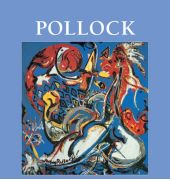 Nacido en 1912, en un pequeño pueblo de Wyoming, Jackson Pollock personificó el sueño norteamericano cuando su país enfrentaba las realidades de la era moderna que reemplazaba al siglo XIX. Pollock se marchó a la ciudad de Nueva York en busca de fama y fortuna. Gracias al Federal Art Project, logró rápidamente la aclamación del público y después de la Segunda Guerra Mundial, se convirtió en la celebridad artística más grande de Estados Unidos. Para De Kooning, Pollock fue un “rompehielos”. Para Max Ernst y Masson, Pollock fue un compañero del movimiento surrealista europeo, y para Motherwell, Pollock fue un legítimo candidato a la categoría de Maestro de la Escuela Norteamericana. Pollock se perdió entre los muchos trastornos de su vida en Nueva York en la década de 1950: el éxito sencillamente le había llegado demasiado rápido y con excesiva facilidad. Fue durante este periodo que se aficionó al alcohol y puso fin a su matrimonio con Lee Krasner. Su vida terminó de la misma forma en que acabó la vida del icono de la cinematografía, James Dean, detrás del volante de su Oldsmobile, después de una noche de copas. ... Далее
Nacido en 1912, en un pequeño pueblo de Wyoming, Jackson Pollock personificó el sueño norteamericano cuando su país enfrentaba las realidades de la era moderna que reemplazaba al siglo XIX. Pollock se marchó a la ciudad de Nueva York en busca de fama y fortuna. Gracias al Federal Art Project, logró rápidamente la aclamación del público y después de la Segunda Guerra Mundial, se convirtió en la celebridad artística más grande de Estados Unidos. Para De Kooning, Pollock fue un “rompehielos”. Para Max Ernst y Masson, Pollock fue un compañero del movimiento surrealista europeo, y para Motherwell, Pollock fue un legítimo candidato a la categoría de Maestro de la Escuela Norteamericana. Pollock se perdió entre los muchos trastornos de su vida en Nueva York en la década de 1950: el éxito sencillamente le había llegado demasiado rápido y con excesiva facilidad. Fue durante este periodo que se aficionó al alcohol y puso fin a su matrimonio con Lee Krasner. Su vida terminó de la misma forma en que acabó la vida del icono de la cinematografía, James Dean, detrás del volante de su Oldsmobile, después de una noche de copas. ... Далее -
8.
 Paul Klee nació en 1879 en Münchenbuchsee, Suiza, y creció en una familia de músicos. En vez de seguir la tradición musical de la familia, decidió estudiar arte en la academia de Munich. Sin embargo, el amor que durante su niñez sintió por la música siempre fue parte importante en su vida y su obra. En 1911 Klee conoció a Alexei Javlensky, Vasily Kandinsky, August Macke, Franz Marc y otras figuras de vanguardia y participó en importantes muestras del arte vanguardista, incluyendo la segunda exhibición de Blaue Reiter en la galería Hans Goltz de Munich, en 1912. Es difícil clasificar a Klee como artista, ya que no se asoció con ningún movimiento en particular. En su obra se destacaron los temas satíricos y las representaciones de sueños y fantasías. El arte primitivo, el surrealismo y el cubismo parecen confundirse en sus delicadas pinturas en pequeña escala. El arte de Klee también se distinguió por una extraordinaria diversidad e innovación en la técnica, siendo una de sus más efectivas la transferencia al óleo. La realizaba dibujando con un objeto puntiagudo en el reverso de una hoja recubierta con pintura al óleo y colocada sobre otra hoja. Como efecto secundario del proceso se creaban manchas y marcas de los pigmentos, pero eso daba a las obras de Klee una especie de impresión “fantasmal” que puede apreciarse en muchas de sus obras. Una de las pinturas más populares de Klee en la actualidad es Der Goldfisch (El pez dorado) de 1925, en el que un luminoso pez destella en suspensión en un tenebroso mundo acuático. De 1920 a 1931, además de ser maestro en el Bauhaus, la escuela de arte más avanzada de Alemania, Klee llevó una vida inmensamente productiva. Finalmente, con la llegada al poder de los nazis, él y su esposa tuvieron que salir de Alemania para dirigirse a su natal Suiza. Las obras posteriores de Klee, en las que dominan las formas simplificadas y arcaicas, muestra una preocupación con la mortalidad. Klee murió en 1940, después de una larga enfermedad. ... Далее
Paul Klee nació en 1879 en Münchenbuchsee, Suiza, y creció en una familia de músicos. En vez de seguir la tradición musical de la familia, decidió estudiar arte en la academia de Munich. Sin embargo, el amor que durante su niñez sintió por la música siempre fue parte importante en su vida y su obra. En 1911 Klee conoció a Alexei Javlensky, Vasily Kandinsky, August Macke, Franz Marc y otras figuras de vanguardia y participó en importantes muestras del arte vanguardista, incluyendo la segunda exhibición de Blaue Reiter en la galería Hans Goltz de Munich, en 1912. Es difícil clasificar a Klee como artista, ya que no se asoció con ningún movimiento en particular. En su obra se destacaron los temas satíricos y las representaciones de sueños y fantasías. El arte primitivo, el surrealismo y el cubismo parecen confundirse en sus delicadas pinturas en pequeña escala. El arte de Klee también se distinguió por una extraordinaria diversidad e innovación en la técnica, siendo una de sus más efectivas la transferencia al óleo. La realizaba dibujando con un objeto puntiagudo en el reverso de una hoja recubierta con pintura al óleo y colocada sobre otra hoja. Como efecto secundario del proceso se creaban manchas y marcas de los pigmentos, pero eso daba a las obras de Klee una especie de impresión “fantasmal” que puede apreciarse en muchas de sus obras. Una de las pinturas más populares de Klee en la actualidad es Der Goldfisch (El pez dorado) de 1925, en el que un luminoso pez destella en suspensión en un tenebroso mundo acuático. De 1920 a 1931, además de ser maestro en el Bauhaus, la escuela de arte más avanzada de Alemania, Klee llevó una vida inmensamente productiva. Finalmente, con la llegada al poder de los nazis, él y su esposa tuvieron que salir de Alemania para dirigirse a su natal Suiza. Las obras posteriores de Klee, en las que dominan las formas simplificadas y arcaicas, muestra una preocupación con la mortalidad. Klee murió en 1940, después de una larga enfermedad. ... Далее -
9.
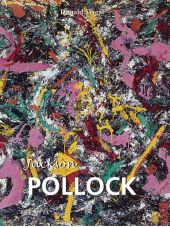 Nacido en 1912, en un pequeño pueblo de Wyoming, Jackson Pollock personificó el sueño norteamericano cuando su país enfrentaba las realidades de la era moderna que reemplazaba al siglo XIX. Pollock se marchó a la ciudad de Nueva York en busca de fama y fortuna. Gracias al Federal Art Project, logró rápidamente la aclamación del público y después de la Segunda Guerra Mundial, se convirtió en la celebridad artística más grande de Estados Unidos. Para De Kooning, Pollock fue un “rompehielos”. Para Max Ernst y Masson, Pollock fue un compañero del movimiento surrealista europeo, y para Motherwell, Pollock fue un legítimo candidato a la categoría de Maestro de la Escuela Norteamericana. Pollock se perdió entre los muchos trastornos de su vida en Nueva York en la década de 1950: el éxito sencillamente le había llegado demasiado rápido y con excesiva facilidad. Fue durante este periodo que se aficionó al alcohol y puso fin a su matrimonio con Lee Krasner. Su vida terminó de la misma forma en que acabó la vida del icono de la cinematografía, James Dean, detrás del volante de su Oldsmobile, después de una noche de copas. ... Далее
Nacido en 1912, en un pequeño pueblo de Wyoming, Jackson Pollock personificó el sueño norteamericano cuando su país enfrentaba las realidades de la era moderna que reemplazaba al siglo XIX. Pollock se marchó a la ciudad de Nueva York en busca de fama y fortuna. Gracias al Federal Art Project, logró rápidamente la aclamación del público y después de la Segunda Guerra Mundial, se convirtió en la celebridad artística más grande de Estados Unidos. Para De Kooning, Pollock fue un “rompehielos”. Para Max Ernst y Masson, Pollock fue un compañero del movimiento surrealista europeo, y para Motherwell, Pollock fue un legítimo candidato a la categoría de Maestro de la Escuela Norteamericana. Pollock se perdió entre los muchos trastornos de su vida en Nueva York en la década de 1950: el éxito sencillamente le había llegado demasiado rápido y con excesiva facilidad. Fue durante este periodo que se aficionó al alcohol y puso fin a su matrimonio con Lee Krasner. Su vida terminó de la misma forma en que acabó la vida del icono de la cinematografía, James Dean, detrás del volante de su Oldsmobile, después de una noche de copas. ... Далее -
10.
 „Am Anfang die weiße Leinwand, leer, dann ein vorsichtiger Beginn, die Farbe ergießt sich aus dem Topf auf die weiße Fläche…“ Hans Namuth. Jackson Pollock wird 1912 in einem kleinen Dorf in Wyoming geboren. Er verkörpert alle sich um das entstehende Amerika rankenden Mythen, das sich mit der Realität des ausgehenden 19. und des beginnenden 20. Jahrhunderts, dessen Modernität alle Bezugspunkte zerstört, auseinandersetzt. Wie in einem Roman erobert Pollock New York und hat, dank des Federal Art Projekt, schnell Erfolg und einen guten Ruf. Nach dem Zweiten Weltkrieg wird er zum ersten großen Star der amerikanischen Malerei. Hofiert und umschmeichelt, wird Pollock, wie es De Kooning ausgedrückt hat, zum Symbol des „Eisbrechers“. Für Max Ernst und Masson war er ein Weggefährte der europäischen Surrealisten, für Motherwell ein Thronanwärter für den Meister der Amerikanischen Schule. Aber in der stürmischen Zeit des New York der 1950er und 60er Jahre verliert Pollock alle seine Bezugspunkte. Durch seinen zu schnellen Erfolg verfällt er dem Alkoholismus und zerstört seine Ehe mit Lee Krasner. Um seinen Mythos vollkommen zu machen, musste er, wie der andere Star dieser Epoche, James Dean, nach einem Saufgelage mit seinem Oldtimer tödlich verunglücken. Das vorliegende Ebook betrachtet Pollocks Persönlichkeit unter einem neuen Licht, dem seines Werkes, das ihn unbestritten zu einem Meister des abstrakten amerikanischen Expressionismus macht. ... Далее
„Am Anfang die weiße Leinwand, leer, dann ein vorsichtiger Beginn, die Farbe ergießt sich aus dem Topf auf die weiße Fläche…“ Hans Namuth. Jackson Pollock wird 1912 in einem kleinen Dorf in Wyoming geboren. Er verkörpert alle sich um das entstehende Amerika rankenden Mythen, das sich mit der Realität des ausgehenden 19. und des beginnenden 20. Jahrhunderts, dessen Modernität alle Bezugspunkte zerstört, auseinandersetzt. Wie in einem Roman erobert Pollock New York und hat, dank des Federal Art Projekt, schnell Erfolg und einen guten Ruf. Nach dem Zweiten Weltkrieg wird er zum ersten großen Star der amerikanischen Malerei. Hofiert und umschmeichelt, wird Pollock, wie es De Kooning ausgedrückt hat, zum Symbol des „Eisbrechers“. Für Max Ernst und Masson war er ein Weggefährte der europäischen Surrealisten, für Motherwell ein Thronanwärter für den Meister der Amerikanischen Schule. Aber in der stürmischen Zeit des New York der 1950er und 60er Jahre verliert Pollock alle seine Bezugspunkte. Durch seinen zu schnellen Erfolg verfällt er dem Alkoholismus und zerstört seine Ehe mit Lee Krasner. Um seinen Mythos vollkommen zu machen, musste er, wie der andere Star dieser Epoche, James Dean, nach einem Saufgelage mit seinem Oldtimer tödlich verunglücken. Das vorliegende Ebook betrachtet Pollocks Persönlichkeit unter einem neuen Licht, dem seines Werkes, das ihn unbestritten zu einem Meister des abstrakten amerikanischen Expressionismus macht. ... Далее -
11.
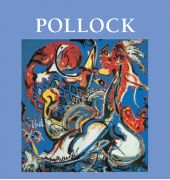 „Am Anfang die weiße Leinwand, leer, dann ein vorsichtiger Beginn, die Farbe ergießt sich aus dem Topf auf die weiße Fläche…“ Hans Namuth. Jackson Pollock wird 1912 in einem kleinen Dorf in Wyoming geboren. Er verkörpert alle sich um das entstehende Amerika rankenden Mythen, das sich mit der Realität des ausgehenden 19. und des beginnenden 20. Jahrhunderts, dessen Modernität alle Bezugspunkte zerstört, auseinandersetzt. Wie in einem Roman erobert Pollock New York und hat, dank des Federal Art Projekt, schnell Erfolg und einen guten Ruf. Nach dem Zweiten Weltkrieg wird er zum ersten großen Star der amerikanischen Malerei. Hofiert und umschmeichelt, wird Pollock, wie es De Kooning ausgedrückt hat, zum Symbol des „Eisbrechers“. Für Max Ernst und Masson war er ein Weggefährte der europäischen Surrealisten, für Motherwell ein Thronanwärter für den Meister der Amerikanischen Schule. Aber in der stürmischen Zeit des New York der 1950er und 60er Jahre verliert Pollock alle seine Bezugspunkte. Durch seinen zu schnellen Erfolg verfällt er dem Alkoholismus und zerstört seine Ehe mit Lee Krasner. Um seinen Mythos vollkommen zu machen, musste er, wie der andere Star dieser Epoche, James Dean, nach einem Saufgelage mit seinem Oldtimer tödlich verunglücken. Das vorliegende Ebook betrachtet Pollocks Persönlichkeit unter einem neuen Licht, dem seines Werkes, das ihn unbestritten zu einem Meister des abstrakten amerikanischen Expressionismus macht. ... Далее
„Am Anfang die weiße Leinwand, leer, dann ein vorsichtiger Beginn, die Farbe ergießt sich aus dem Topf auf die weiße Fläche…“ Hans Namuth. Jackson Pollock wird 1912 in einem kleinen Dorf in Wyoming geboren. Er verkörpert alle sich um das entstehende Amerika rankenden Mythen, das sich mit der Realität des ausgehenden 19. und des beginnenden 20. Jahrhunderts, dessen Modernität alle Bezugspunkte zerstört, auseinandersetzt. Wie in einem Roman erobert Pollock New York und hat, dank des Federal Art Projekt, schnell Erfolg und einen guten Ruf. Nach dem Zweiten Weltkrieg wird er zum ersten großen Star der amerikanischen Malerei. Hofiert und umschmeichelt, wird Pollock, wie es De Kooning ausgedrückt hat, zum Symbol des „Eisbrechers“. Für Max Ernst und Masson war er ein Weggefährte der europäischen Surrealisten, für Motherwell ein Thronanwärter für den Meister der Amerikanischen Schule. Aber in der stürmischen Zeit des New York der 1950er und 60er Jahre verliert Pollock alle seine Bezugspunkte. Durch seinen zu schnellen Erfolg verfällt er dem Alkoholismus und zerstört seine Ehe mit Lee Krasner. Um seinen Mythos vollkommen zu machen, musste er, wie der andere Star dieser Epoche, James Dean, nach einem Saufgelage mit seinem Oldtimer tödlich verunglücken. Das vorliegende Ebook betrachtet Pollocks Persönlichkeit unter einem neuen Licht, dem seines Werkes, das ihn unbestritten zu einem Meister des abstrakten amerikanischen Expressionismus macht. ... Далее -
12.
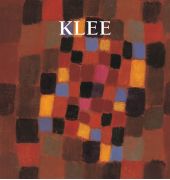 Paul Klee gehört zu den Künstlern, die sich nur schwerlich einer bestimmten kunstgeschichtlichen Bewegung zuordnen lassen. In engem Kontakt mit Wassily Kandinsky und Franz Marc gehörte er wie diese der expressionistischen Künstlergruppe Der Blaue Reiter an. Später knüpfte er Verbindungen zum Bauhaus und unterrichtete sogar Malerei an der Dessauer Schule. Seiner Ansicht nach ging es bei der Kunst keineswegs um die Produktion, sondern vielmehr darum, die Dinge äußerst sichtbar werden zu lassen. In seinen Gemälden vereinte Klee geschickt die zu Beginn des 20. Jahrhunderts vorherrschenden Tendenzen. Er führte kubistische und orphistische Elemente in den deutschen Expressionismus ein und verlieh seinen eigenen Werken eine surrealistische und melancholische Poesie. Der Autor führt uns hier die Wunder der Klee’schen Welt vor Augen, in der jeder Pinselstrich die Macht der Farben bestätigt. ... Далее
Paul Klee gehört zu den Künstlern, die sich nur schwerlich einer bestimmten kunstgeschichtlichen Bewegung zuordnen lassen. In engem Kontakt mit Wassily Kandinsky und Franz Marc gehörte er wie diese der expressionistischen Künstlergruppe Der Blaue Reiter an. Später knüpfte er Verbindungen zum Bauhaus und unterrichtete sogar Malerei an der Dessauer Schule. Seiner Ansicht nach ging es bei der Kunst keineswegs um die Produktion, sondern vielmehr darum, die Dinge äußerst sichtbar werden zu lassen. In seinen Gemälden vereinte Klee geschickt die zu Beginn des 20. Jahrhunderts vorherrschenden Tendenzen. Er führte kubistische und orphistische Elemente in den deutschen Expressionismus ein und verlieh seinen eigenen Werken eine surrealistische und melancholische Poesie. Der Autor führt uns hier die Wunder der Klee’schen Welt vor Augen, in der jeder Pinselstrich die Macht der Farben bestätigt. ... Далее -
13.
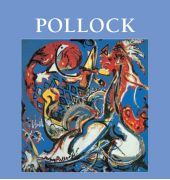 „Am Anfang die weiße Leinwand, leer, dann ein vorsichtiger Beginn, die Farbe ergießt sich aus dem Topf auf die weiße Fläche…“ Hans Namuth. Jackson Pollock wird 1912 in einem kleinen Dorf in Wyoming geboren. Er verkörpert alle sich um das entstehende Amerika rankenden Mythen, das sich mit der Realität des ausgehenden 19. und des beginnenden 20. Jahrhunderts, dessen Modernität alle Bezugspunkte zerstört, auseinandersetzt. Wie in einem Roman erobert Pollock New York und hat, dank des Federal Art Projekt, schnell Erfolg und einen guten Ruf. Nach dem Zweiten Weltkrieg wird er zum ersten großen Star der amerikanischen Malerei. Hofiert und umschmeichelt, wird Pollock, wie es De Kooning ausgedrückt hat, zum Symbol des „Eisbrechers“. Für Max Ernst und Masson war er ein Weggefährte der europäischen Surrealisten, für Motherwell ein Thronanwärter für den Meister der Amerikanischen Schule. Aber in der stürmischen Zeit des New York der 1950er und 60er Jahre verliert Pollock alle seine Bezugspunkte. Durch seinen zu schnellen Erfolg verfällt er dem Alkoholismus und zerstört seine Ehe mit Lee Krasner. Um seinen Mythos vollkommen zu machen, musste er, wie der andere Star dieser Epoche, James Dean, nach einem Saufgelage mit seinem Oldtimer tödlich verunglücken. Das vorliegende Ebook betrachtet Pollocks Persönlichkeit unter einem neuen Licht, dem seines Werkes, das ihn unbestritten zu einem Meister des abstrakten amerikanischen Expressionismus macht. ... Далее
„Am Anfang die weiße Leinwand, leer, dann ein vorsichtiger Beginn, die Farbe ergießt sich aus dem Topf auf die weiße Fläche…“ Hans Namuth. Jackson Pollock wird 1912 in einem kleinen Dorf in Wyoming geboren. Er verkörpert alle sich um das entstehende Amerika rankenden Mythen, das sich mit der Realität des ausgehenden 19. und des beginnenden 20. Jahrhunderts, dessen Modernität alle Bezugspunkte zerstört, auseinandersetzt. Wie in einem Roman erobert Pollock New York und hat, dank des Federal Art Projekt, schnell Erfolg und einen guten Ruf. Nach dem Zweiten Weltkrieg wird er zum ersten großen Star der amerikanischen Malerei. Hofiert und umschmeichelt, wird Pollock, wie es De Kooning ausgedrückt hat, zum Symbol des „Eisbrechers“. Für Max Ernst und Masson war er ein Weggefährte der europäischen Surrealisten, für Motherwell ein Thronanwärter für den Meister der Amerikanischen Schule. Aber in der stürmischen Zeit des New York der 1950er und 60er Jahre verliert Pollock alle seine Bezugspunkte. Durch seinen zu schnellen Erfolg verfällt er dem Alkoholismus und zerstört seine Ehe mit Lee Krasner. Um seinen Mythos vollkommen zu machen, musste er, wie der andere Star dieser Epoche, James Dean, nach einem Saufgelage mit seinem Oldtimer tödlich verunglücken. Das vorliegende Ebook betrachtet Pollocks Persönlichkeit unter einem neuen Licht, dem seines Werkes, das ihn unbestritten zu einem Meister des abstrakten amerikanischen Expressionismus macht. ... Далее -
14.
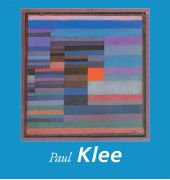 An emblematic figure of the early 20th century, Paul Klee participated in the expansive Avant-Garde movements in Germany and Switzerland. From the vibrant Blaue Reiter movement to Surrealism at the end of the 1930s and throughout his teaching years at the Bauhaus, he attempted to capture the organic and harmonic nature of painting by alluding to other artistic mediums such as poetry, literature, and, above all, music. While he collaborated with artists like August Macke and Alexej von Jawlensky, his most famous partnership was with the abstract expressionist, Wassily Kandinsky. ... Далее
An emblematic figure of the early 20th century, Paul Klee participated in the expansive Avant-Garde movements in Germany and Switzerland. From the vibrant Blaue Reiter movement to Surrealism at the end of the 1930s and throughout his teaching years at the Bauhaus, he attempted to capture the organic and harmonic nature of painting by alluding to other artistic mediums such as poetry, literature, and, above all, music. While he collaborated with artists like August Macke and Alexej von Jawlensky, his most famous partnership was with the abstract expressionist, Wassily Kandinsky. ... Далее -
15.
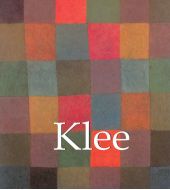 Paul Klee gehört zu den Künstlern, die sich nur schwerlich einer bestimmten kunstgeschichtlichen Bewegung zuordnen lassen. In engem Kontakt mit Wassily Kandinsky und Franz Marc gehörte er wie diese der expressionistischen Künstlergruppe Der Blaue Reiter an. Später knüpfte er Verbindungen zum Bauhaus und unterrichtete sogar Malerei an der Dessauer Schule. Seiner Ansicht nach ging es bei der Kunst keineswegs um die Produktion, sondern vielmehr darum, die Dinge äußerst sichtbar werden zu lassen. In seinen Gemälden vereinte Klee geschickt die zu Beginn des 20. Jahrhunderts vorherrschenden Tendenzen. Er führte kubistische und orphistische Elemente in den deutschen Expressionismus ein und verlieh seinen eigenen Werken eine surrealistische und melancholische Poesie. Der Autor führt uns hier die Wunder der Klee’schen Welt vor Augen, in der jeder Pinselstrich die Macht der Farben bestätigt. ... Далее
Paul Klee gehört zu den Künstlern, die sich nur schwerlich einer bestimmten kunstgeschichtlichen Bewegung zuordnen lassen. In engem Kontakt mit Wassily Kandinsky und Franz Marc gehörte er wie diese der expressionistischen Künstlergruppe Der Blaue Reiter an. Später knüpfte er Verbindungen zum Bauhaus und unterrichtete sogar Malerei an der Dessauer Schule. Seiner Ansicht nach ging es bei der Kunst keineswegs um die Produktion, sondern vielmehr darum, die Dinge äußerst sichtbar werden zu lassen. In seinen Gemälden vereinte Klee geschickt die zu Beginn des 20. Jahrhunderts vorherrschenden Tendenzen. Er führte kubistische und orphistische Elemente in den deutschen Expressionismus ein und verlieh seinen eigenen Werken eine surrealistische und melancholische Poesie. Der Autor führt uns hier die Wunder der Klee’schen Welt vor Augen, in der jeder Pinselstrich die Macht der Farben bestätigt. ... Далее -
16.
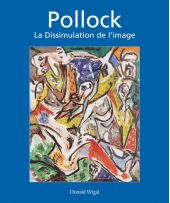 Jackson Pollock(Cody, Wyoming, 1912 – New York, 1956) Pollock fut le représentant le plus important et le plus influent de l’expressionnisme abstrait. Il avait étudié auprès du régionaliste Thomas Hart Benton, et était également marié au peintre abstrait Lee Krasner (étudiante de Hans Hofmann). Il comptait parmi ses collègues Aschile Gorky, Willem de Kooning, Franz Kline, Robert Motherwell, et d’autres issus de l’école dite de New York. En 1947, il développa l’action painting ou, en termes moins précis, le dripping. Il s’intéressait à un processus de création et d’expression du moment, impliquant le moins de références possibles à la réalité visuelle. Abandonnant les pinceaux, le chevalet et la palette, il contrôlait lui-même les quantités de peinture qu’il faisait couler ou projetait sur une toile généralement très grande qu’il avait l’habitude d’étaler sur le sol. Bien que son obsession première fût l’expression de sa propre vie intérieure (subconscient) à travers son art, sa vie émotionnelle était sans conteste très instable, son approche du processus créatif et la plupart de ses oeuvres bouleversèrent de façon définitive l’évolution de l’art en Amérique. ... Далее
Jackson Pollock(Cody, Wyoming, 1912 – New York, 1956) Pollock fut le représentant le plus important et le plus influent de l’expressionnisme abstrait. Il avait étudié auprès du régionaliste Thomas Hart Benton, et était également marié au peintre abstrait Lee Krasner (étudiante de Hans Hofmann). Il comptait parmi ses collègues Aschile Gorky, Willem de Kooning, Franz Kline, Robert Motherwell, et d’autres issus de l’école dite de New York. En 1947, il développa l’action painting ou, en termes moins précis, le dripping. Il s’intéressait à un processus de création et d’expression du moment, impliquant le moins de références possibles à la réalité visuelle. Abandonnant les pinceaux, le chevalet et la palette, il contrôlait lui-même les quantités de peinture qu’il faisait couler ou projetait sur une toile généralement très grande qu’il avait l’habitude d’étaler sur le sol. Bien que son obsession première fût l’expression de sa propre vie intérieure (subconscient) à travers son art, sa vie émotionnelle était sans conteste très instable, son approche du processus créatif et la plupart de ses oeuvres bouleversèrent de façon définitive l’évolution de l’art en Amérique. ... Далее -
17.
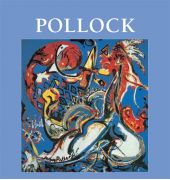 Jackson Pollock (Cody, Wyoming, 1912 – New York, 1956) Pollock fut le représentant le plus important et le plus influent de l’expressionnisme abstrait. Il avait étudié auprès du régionaliste Thomas Hart Benton, et était également marié au peintre abstrait Lee Krasner (étudiante de Hans Hofmann). Il comptait parmi ses collègues Aschile Gorky, Willem de Kooning, Franz Kline, Robert Motherwell, et d’autres issus de l’école dite de New York. En 1947, il développa l’action painting ou, en termes moins précis, le dripping. Il s’intéressait à un processus de création et d’expression du moment, impliquant le moins de références possibles à la réalité visuelle. Abandonnant les pinceaux, le chevalet et la palette, il contrôlait lui-même les quantités de peinture qu’il faisait couler ou projetait sur une toile généralement très grande qu’il avait l’habitude d’étaler sur le sol. Bien que son obsession première fût l’expression de sa propre vie intérieure (subconscient) à travers son art, sa vie émotionnelle était sans conteste très instable, son approche du processus créatif et la plupart de ses oeuvres bouleversèrent de façon définitive l’évolution de l’art en Amérique. ... Далее
Jackson Pollock (Cody, Wyoming, 1912 – New York, 1956) Pollock fut le représentant le plus important et le plus influent de l’expressionnisme abstrait. Il avait étudié auprès du régionaliste Thomas Hart Benton, et était également marié au peintre abstrait Lee Krasner (étudiante de Hans Hofmann). Il comptait parmi ses collègues Aschile Gorky, Willem de Kooning, Franz Kline, Robert Motherwell, et d’autres issus de l’école dite de New York. En 1947, il développa l’action painting ou, en termes moins précis, le dripping. Il s’intéressait à un processus de création et d’expression du moment, impliquant le moins de références possibles à la réalité visuelle. Abandonnant les pinceaux, le chevalet et la palette, il contrôlait lui-même les quantités de peinture qu’il faisait couler ou projetait sur une toile généralement très grande qu’il avait l’habitude d’étaler sur le sol. Bien que son obsession première fût l’expression de sa propre vie intérieure (subconscient) à travers son art, sa vie émotionnelle était sans conteste très instable, son approche du processus créatif et la plupart de ses oeuvres bouleversèrent de façon définitive l’évolution de l’art en Amérique. ... Далее -
18.
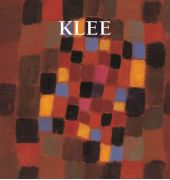 Paul Klee (Munchenbuchsee, 1879 – Muralto, 1940) La réputation de Klee était celle d’un artiste introverti et rêveur. C’est une image qu’il cultivait en partie lui-même. En 1911, Klee fut présenté à August Macke. Peu après, il rencontra Marc et Kandinsky. Ils l’accueillirent dans le groupe exposant sous le nom de Blaue Reiter et il contribua à leur almanach. En avril 1912, Klee se rendit à Paris et fut profondément impressionné par «l’Orphisme » abstrait de Robert Delaunay. L’art de Klee se distingue par sa diversité extraordinaire et son innovation technique. L’une de ses techniques les plus efficaces était en réalité très simple – le transfert à l’huile (le dessin avec une pointe affûtée au verso d’une feuille couverte de peinture à l’huile et couchée sur une autre feuille). Les effets collatéraux du procédé entraînaient l’apparition de taches de couleur dues au hasard. De cette façon, Klee parvint dans plusieurs oeuvres à éhiculer une impression «spectrale ». De nos jours, l’un des plus célèbres tableaux de Klee est Der Goldfisch (Le Poisson rouge) de 1925. Un poisson lumineux brille vivement, en suspension dans un enfer aquatique. Klee fut xtrêmement productif pendant les années du Bauhaus, mais en fin de compte, la prise du pouvoir par les Nationaux-Socialistes le poussa à quitter l’Allemagne avec sa femme pour sa Suisse natale. Les dernières oeuvres de Klee, dans lesquelles dominent les formes simplifiées et archaïques, montrent sa préoccupation pour la mortalité. Klee mourut en 1940, au terme d’une longue maladie. ... Далее
Paul Klee (Munchenbuchsee, 1879 – Muralto, 1940) La réputation de Klee était celle d’un artiste introverti et rêveur. C’est une image qu’il cultivait en partie lui-même. En 1911, Klee fut présenté à August Macke. Peu après, il rencontra Marc et Kandinsky. Ils l’accueillirent dans le groupe exposant sous le nom de Blaue Reiter et il contribua à leur almanach. En avril 1912, Klee se rendit à Paris et fut profondément impressionné par «l’Orphisme » abstrait de Robert Delaunay. L’art de Klee se distingue par sa diversité extraordinaire et son innovation technique. L’une de ses techniques les plus efficaces était en réalité très simple – le transfert à l’huile (le dessin avec une pointe affûtée au verso d’une feuille couverte de peinture à l’huile et couchée sur une autre feuille). Les effets collatéraux du procédé entraînaient l’apparition de taches de couleur dues au hasard. De cette façon, Klee parvint dans plusieurs oeuvres à éhiculer une impression «spectrale ». De nos jours, l’un des plus célèbres tableaux de Klee est Der Goldfisch (Le Poisson rouge) de 1925. Un poisson lumineux brille vivement, en suspension dans un enfer aquatique. Klee fut xtrêmement productif pendant les années du Bauhaus, mais en fin de compte, la prise du pouvoir par les Nationaux-Socialistes le poussa à quitter l’Allemagne avec sa femme pour sa Suisse natale. Les dernières oeuvres de Klee, dans lesquelles dominent les formes simplifiées et archaïques, montrent sa préoccupation pour la mortalité. Klee mourut en 1940, au terme d’une longue maladie. ... Далее -
19.
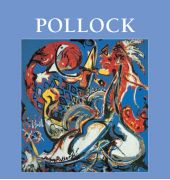 Jackson Pollock (Cody, Wyoming, 1912 – New York, 1956) Pollock fut le représentant le plus important et le plus influent de l’expressionnisme abstrait. Il avait étudié auprès du régionaliste Thomas Hart Benton, et était également marié au peintre abstrait Lee Krasner (étudiante de Hans Hofmann). Il comptait parmi ses collègues Aschile Gorky, Willem de Kooning, Franz Kline, Robert Motherwell, et d’autres issus de l’école dite de New York. En 1947, il développa l’action painting ou, en termes moins précis, le dripping. Il s’intéressait à un processus de création et d’expression du moment, impliquant le moins de références possibles à la réalité visuelle. Abandonnant les pinceaux, le chevalet et la palette, il contrôlait lui-même les quantités de peinture qu’il faisait couler ou projetait sur une toile généralement très grande qu’il avait l’habitude d’étaler sur le sol. Bien que son obsession première fût l’expression de sa propre vie intérieure (subconscient) à travers son art, sa vie émotionnelle était sans conteste très instable, son approche du processus créatif et la plupart de ses oeuvres bouleversèrent de façon définitive l’évolution de l’art en Amérique. ... Далее
Jackson Pollock (Cody, Wyoming, 1912 – New York, 1956) Pollock fut le représentant le plus important et le plus influent de l’expressionnisme abstrait. Il avait étudié auprès du régionaliste Thomas Hart Benton, et était également marié au peintre abstrait Lee Krasner (étudiante de Hans Hofmann). Il comptait parmi ses collègues Aschile Gorky, Willem de Kooning, Franz Kline, Robert Motherwell, et d’autres issus de l’école dite de New York. En 1947, il développa l’action painting ou, en termes moins précis, le dripping. Il s’intéressait à un processus de création et d’expression du moment, impliquant le moins de références possibles à la réalité visuelle. Abandonnant les pinceaux, le chevalet et la palette, il contrôlait lui-même les quantités de peinture qu’il faisait couler ou projetait sur une toile généralement très grande qu’il avait l’habitude d’étaler sur le sol. Bien que son obsession première fût l’expression de sa propre vie intérieure (subconscient) à travers son art, sa vie émotionnelle était sans conteste très instable, son approche du processus créatif et la plupart de ses oeuvres bouleversèrent de façon définitive l’évolution de l’art en Amérique. ... Далее -
20.
 Paul Klee (Munchenbuchsee, 1879 – Muralto, 1940) La réputation de Klee était celle d’un artiste introverti et rêveur. C’est une image qu’il cultivait en partie lui-même. En 1911, Klee fut présenté à August Macke. Peu après, il rencontra Marc et Kandinsky. Ils l’accueillirent dans le groupe exposant sous le nom de Blaue Reiter et il contribua à leur almanach. En avril 1912, Klee se rendit à Paris et fut profondément impressionné par «l’Orphisme » abstrait de Robert Delaunay. L’art de Klee se distingue par sa diversité extraordinaire et son innovation technique. L’une de ses techniques les plus efficaces était en réalité très simple – le transfert à l’huile (le dessin avec une pointe affûtée au verso d’une feuille couverte de peinture à l’huile et couchée sur une autre feuille). Les effets collatéraux du procédé entraînaient l’apparition de taches de couleur dues au hasard. De cette façon, Klee parvint dans plusieurs oeuvres à éhiculer une impression «spectrale ». De nos jours, l’un des plus célèbres tableaux de Klee est Der Goldfisch (Le Poisson rouge) de 1925. Un poisson lumineux brille vivement, en suspension dans un enfer aquatique. Klee fut xtrêmement productif pendant les années du Bauhaus, mais en fin de compte, la prise du pouvoir par les Nationaux-Socialistes le poussa à quitter l’Allemagne avec sa femme pour sa Suisse natale. Les dernières oeuvres de Klee, dans lesquelles dominent les formes simplifiées et archaïques, montrent sa préoccupation pour la mortalité. Klee mourut en 1940, au terme d’une longue maladie. ... Далее
Paul Klee (Munchenbuchsee, 1879 – Muralto, 1940) La réputation de Klee était celle d’un artiste introverti et rêveur. C’est une image qu’il cultivait en partie lui-même. En 1911, Klee fut présenté à August Macke. Peu après, il rencontra Marc et Kandinsky. Ils l’accueillirent dans le groupe exposant sous le nom de Blaue Reiter et il contribua à leur almanach. En avril 1912, Klee se rendit à Paris et fut profondément impressionné par «l’Orphisme » abstrait de Robert Delaunay. L’art de Klee se distingue par sa diversité extraordinaire et son innovation technique. L’une de ses techniques les plus efficaces était en réalité très simple – le transfert à l’huile (le dessin avec une pointe affûtée au verso d’une feuille couverte de peinture à l’huile et couchée sur une autre feuille). Les effets collatéraux du procédé entraînaient l’apparition de taches de couleur dues au hasard. De cette façon, Klee parvint dans plusieurs oeuvres à éhiculer une impression «spectrale ». De nos jours, l’un des plus célèbres tableaux de Klee est Der Goldfisch (Le Poisson rouge) de 1925. Un poisson lumineux brille vivement, en suspension dans un enfer aquatique. Klee fut xtrêmement productif pendant les années du Bauhaus, mais en fin de compte, la prise du pouvoir par les Nationaux-Socialistes le poussa à quitter l’Allemagne avec sa femme pour sa Suisse natale. Les dernières oeuvres de Klee, dans lesquelles dominent les formes simplifiées et archaïques, montrent sa préoccupation pour la mortalité. Klee mourut en 1940, au terme d’une longue maladie. ... Далее -
21.
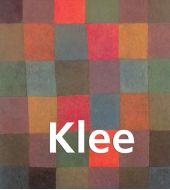 Paul Klee (Munchenbuchsee, 1879 – Muralto, 1940) La réputation de Klee était celle d’un artiste introverti et rêveur. C’est une image qu’il cultivait en partie lui-même. En 1911, Klee fut présenté à August Macke. Peu après, il rencontra Marc et Kandinsky. Ils l’accueillirent dans le groupe exposant sous le nom de Blaue Reiter et il contribua à leur almanach. En avril 1912, Klee se rendit à Paris et fut profondément impressionné par «l’Orphisme » abstrait de Robert Delaunay. L’art de Klee se distingue par sa diversité extraordinaire et son innovation technique. L’une de ses techniques les plus efficaces était en réalité très simple – le transfert à l’huile (le dessin avec une pointe affûtée au verso d’une feuille couverte de peinture à l’huile et couchée sur une autre feuille). Les effets collatéraux du procédé entraînaient l’apparition de taches de couleur dues au hasard. De cette façon, Klee parvint dans plusieurs oeuvres à éhiculer une impression «spectrale ». De nos jours, l’un des plus célèbres tableaux de Klee est Der Goldfisch (Le Poisson rouge) de 1925. Un poisson lumineux brille vivement, en suspension dans un enfer aquatique. Klee fut xtrêmement productif pendant les années du Bauhaus, mais en fin de compte, la prise du pouvoir par les Nationaux-Socialistes le poussa à quitter l’Allemagne avec sa femme pour sa Suisse natale. Les dernières oeuvres de Klee, dans lesquelles dominent les formes simplifiées et archaïques, montrent sa préoccupation pour la mortalité. Klee mourut en 1940, au terme d’une longue maladie. ... Далее
Paul Klee (Munchenbuchsee, 1879 – Muralto, 1940) La réputation de Klee était celle d’un artiste introverti et rêveur. C’est une image qu’il cultivait en partie lui-même. En 1911, Klee fut présenté à August Macke. Peu après, il rencontra Marc et Kandinsky. Ils l’accueillirent dans le groupe exposant sous le nom de Blaue Reiter et il contribua à leur almanach. En avril 1912, Klee se rendit à Paris et fut profondément impressionné par «l’Orphisme » abstrait de Robert Delaunay. L’art de Klee se distingue par sa diversité extraordinaire et son innovation technique. L’une de ses techniques les plus efficaces était en réalité très simple – le transfert à l’huile (le dessin avec une pointe affûtée au verso d’une feuille couverte de peinture à l’huile et couchée sur une autre feuille). Les effets collatéraux du procédé entraînaient l’apparition de taches de couleur dues au hasard. De cette façon, Klee parvint dans plusieurs oeuvres à éhiculer une impression «spectrale ». De nos jours, l’un des plus célèbres tableaux de Klee est Der Goldfisch (Le Poisson rouge) de 1925. Un poisson lumineux brille vivement, en suspension dans un enfer aquatique. Klee fut xtrêmement productif pendant les années du Bauhaus, mais en fin de compte, la prise du pouvoir par les Nationaux-Socialistes le poussa à quitter l’Allemagne avec sa femme pour sa Suisse natale. Les dernières oeuvres de Klee, dans lesquelles dominent les formes simplifiées et archaïques, montrent sa préoccupation pour la mortalité. Klee mourut en 1940, au terme d’une longue maladie. ... Далее -
22.
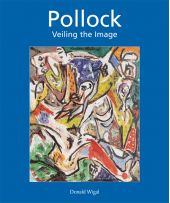 Born in 1912, in a small town in Wyoming, Jackson Pollock embodied the American dream as the country found itself confronted with the realities of a modern era replacing the fading nineteenth century. Pollock left home in search of fame and fortune in New York City. Thanks to the Federal Art Project he quickly won acclaim, and after the Second World War became the biggest art celebrity in America. For De Kooning, Pollock was the “icebreaker”. For Max Ernst and Masson, Pollock was a fellow member of the European Surrealist movement. And for Motherwell, Pollock was a legitimate candidate for the status of the Master of the American School. During the many upheavals in his life in Nez York in the 1950s and 60s, Pollock lost his bearings – success had simply come too fast and too easily. It was during this period that he turned to alcohol and disintegrated his marriage to Lee Krasner. His life ended like that of 50s film icon James Dean behind the wheel of his Oldsmobile, after a night of drinking. ... Далее
Born in 1912, in a small town in Wyoming, Jackson Pollock embodied the American dream as the country found itself confronted with the realities of a modern era replacing the fading nineteenth century. Pollock left home in search of fame and fortune in New York City. Thanks to the Federal Art Project he quickly won acclaim, and after the Second World War became the biggest art celebrity in America. For De Kooning, Pollock was the “icebreaker”. For Max Ernst and Masson, Pollock was a fellow member of the European Surrealist movement. And for Motherwell, Pollock was a legitimate candidate for the status of the Master of the American School. During the many upheavals in his life in Nez York in the 1950s and 60s, Pollock lost his bearings – success had simply come too fast and too easily. It was during this period that he turned to alcohol and disintegrated his marriage to Lee Krasner. His life ended like that of 50s film icon James Dean behind the wheel of his Oldsmobile, after a night of drinking. ... Далее -
23.
 Born in 1912, in a small town in Wyoming, Jackson Pollock embodied the American dream as the country found itself confronted with the realities of a modern era replacing the fading nineteenth century. Pollock left home in search of fame and fortune in New York City. Thanks to the Federal Art Project he quickly won acclaim, and after the Second World War became the biggest art celebrity in America. For De Kooning, Pollock was the “icebreaker”. For Max Ernst and Masson, Pollock was a fellow member of the European Surrealist movement. And for Motherwell, Pollock was a legitimate candidate for the status of the Master of the American School. During the many upheavals in his life in Nez York in the 1950s and 60s, Pollock lost his bearings – success had simply come too fast and too easily. It was during this period that he turned to alcohol and disintegrated his marriage to Lee Krasner. His life ended like that of 50s film icon James Dean behind the wheel of his Oldsmobile, after a night of drinking. ... Далее
Born in 1912, in a small town in Wyoming, Jackson Pollock embodied the American dream as the country found itself confronted with the realities of a modern era replacing the fading nineteenth century. Pollock left home in search of fame and fortune in New York City. Thanks to the Federal Art Project he quickly won acclaim, and after the Second World War became the biggest art celebrity in America. For De Kooning, Pollock was the “icebreaker”. For Max Ernst and Masson, Pollock was a fellow member of the European Surrealist movement. And for Motherwell, Pollock was a legitimate candidate for the status of the Master of the American School. During the many upheavals in his life in Nez York in the 1950s and 60s, Pollock lost his bearings – success had simply come too fast and too easily. It was during this period that he turned to alcohol and disintegrated his marriage to Lee Krasner. His life ended like that of 50s film icon James Dean behind the wheel of his Oldsmobile, after a night of drinking. ... Далее -
24.
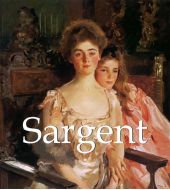 Sargent was born in Florence, in 1856, the son of cultivated parents. When Sargent entered the school of Carolus-Duran he attained much more than the average pupils. His father was a retired Massachusetts gentleman, having practised medicine in Philadelphia. Sargent’s home life was penetrated with refinement, and outside it were the beautiful influences of Florence, combining the charms of sky and hills with the wonders of art in the galleries and the opportunities of an intellectual and artistic society. Accordingly, when Sargent arrived in Paris, he was not only a skilful draughtsman and painter as a result of his study of the Italian masters, but he also had a refined and cultivated taste, which perhaps had an even greater influence upon his career. Later in Spain, it was chiefly upon the lessons learned from Velázquez that he found his own brilliant method. Sargent belongs to America, but is claimed by others as a citizen of the world, or a cosmopolitan. Sargent, with the exception of a few months at distant intervals, spent his life abroad. The artistic influences which affected him were those of Europe. Yet his Americanism may be detected in his extraordinary facility to absorb impressions, in the individuality he evolved, and in the subtlety and reserve of his methods – qualities that are characteristic of the best American art. ... Далее
Sargent was born in Florence, in 1856, the son of cultivated parents. When Sargent entered the school of Carolus-Duran he attained much more than the average pupils. His father was a retired Massachusetts gentleman, having practised medicine in Philadelphia. Sargent’s home life was penetrated with refinement, and outside it were the beautiful influences of Florence, combining the charms of sky and hills with the wonders of art in the galleries and the opportunities of an intellectual and artistic society. Accordingly, when Sargent arrived in Paris, he was not only a skilful draughtsman and painter as a result of his study of the Italian masters, but he also had a refined and cultivated taste, which perhaps had an even greater influence upon his career. Later in Spain, it was chiefly upon the lessons learned from Velázquez that he found his own brilliant method. Sargent belongs to America, but is claimed by others as a citizen of the world, or a cosmopolitan. Sargent, with the exception of a few months at distant intervals, spent his life abroad. The artistic influences which affected him were those of Europe. Yet his Americanism may be detected in his extraordinary facility to absorb impressions, in the individuality he evolved, and in the subtlety and reserve of his methods – qualities that are characteristic of the best American art. ... Далее -
25.
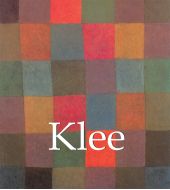 An emblematic figure of the early 20th century, Paul Klee participated in the expansive Avant-Garde movements in Germany and Switzerland. From the vibrant Blaue Reiter movement to Surrealism at the end of the 1930s and throughout his teaching years at the Bauhaus, he attempted to capture the organic and harmonic nature of painting by alluding to other artistic mediums such as poetry, literature, and, above all, music. While he collaborated with artists like August Macke and Alexej von Jawlensky, his most famous partnership was with the abstract expressionist, Wassily Kandinsky. ... Далее
An emblematic figure of the early 20th century, Paul Klee participated in the expansive Avant-Garde movements in Germany and Switzerland. From the vibrant Blaue Reiter movement to Surrealism at the end of the 1930s and throughout his teaching years at the Bauhaus, he attempted to capture the organic and harmonic nature of painting by alluding to other artistic mediums such as poetry, literature, and, above all, music. While he collaborated with artists like August Macke and Alexej von Jawlensky, his most famous partnership was with the abstract expressionist, Wassily Kandinsky. ... Далее -
26.
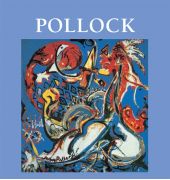 Born in 1912, in a small town in Wyoming, Jackson Pollock embodied the American dream as the country found itself confronted with the realities of a modern era replacing the fading nineteenth century. Pollock left home in search of fame and fortune in New York City. Thanks to the Federal Art Project he quickly won acclaim, and after the Second World War became the biggest art celebrity in America. For De Kooning, Pollock was the “icebreaker”. For Max Ernst and Masson, Pollock was a fellow member of the European Surrealist movement. And for Motherwell, Pollock was a legitimate candidate for the status of the Master of the American School. During the many upheavals in his life in Nez York in the 1950s and 60s, Pollock lost his bearings – success had simply come too fast and too easily. It was during this period that he turned to alcohol and disintegrated his marriage to Lee Krasner. His life ended like that of 50s film icon James Dean behind the wheel of his Oldsmobile, after a night of drinking. ... Далее
Born in 1912, in a small town in Wyoming, Jackson Pollock embodied the American dream as the country found itself confronted with the realities of a modern era replacing the fading nineteenth century. Pollock left home in search of fame and fortune in New York City. Thanks to the Federal Art Project he quickly won acclaim, and after the Second World War became the biggest art celebrity in America. For De Kooning, Pollock was the “icebreaker”. For Max Ernst and Masson, Pollock was a fellow member of the European Surrealist movement. And for Motherwell, Pollock was a legitimate candidate for the status of the Master of the American School. During the many upheavals in his life in Nez York in the 1950s and 60s, Pollock lost his bearings – success had simply come too fast and too easily. It was during this period that he turned to alcohol and disintegrated his marriage to Lee Krasner. His life ended like that of 50s film icon James Dean behind the wheel of his Oldsmobile, after a night of drinking. ... Далее
Комментарии:


